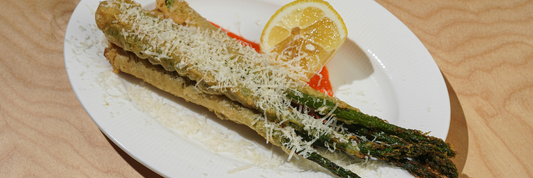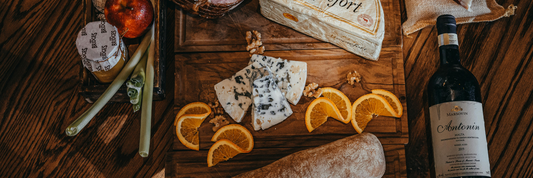In today’s competitive food industry, bakeries face tight margins, rising ingredient prices, and staffing challenges. To stay profitable, owners must master cost control in bakeries balancing quality with efficiency.
This guide explores 10 cost control strategies for bakeries that help you cut expenses, reduce waste, and boost profitability. You’ll also see how choosing the right eco-friendly bakery packaging from KimEcopak supports both your margins and your mission of sustainability.
- How Much Does It Cost to Start a Bakery? A Complete Breakdown
- How to Start a Cupcake Business: Step-by-Step Beginner’s Guide
- How to Start a Bakery Business in Canada: Your Complete Step-by-Step Guide
Know Your Cost Structure Inside Out

Before you can cut costs, you need visibility. Every bakery’s expenses typically fall into three main buckets:
- Ingredients & raw materials: flour, dairy, sugar, yeast, chocolate, and packaging
- Labor: wages, benefits, overtime, and training
- Overhead: rent, utilities, insurance, marketing, and equipment maintenance
Start by calculating your Cost of Goods Sold (COGS) including both ingredients and packaging and your labor cost percentage. Ideally, total COGS + labor should stay under 70% of sales.
Use simple tools like Google Sheets or bakery-specific software to track trends weekly.
Buy Smarter, Not Just Cheaper
Negotiate & diversify suppliers
Build long-term relationships with trusted vendors and negotiate volume discounts or stable pricing contracts. Don’t rely on a single flour or butter supplier split orders among two or three to reduce risk.
Source locally where possible
Buying locally can reduce freight fees and delivery delays, especially for perishables. Plus, “locally sourced” is a strong marketing point.
Monitor price fluctuations
Track ingredient prices quarterly. When you see patterns for example, butter prices dipping seasonally bulk up strategically.
Tip: Always include packaging in this review. Choosing the right partner can reduce hidden costs explore KimEcopak’s kraft bakery boxes or compostable coffee cups to lock in affordable, eco-friendly packaging supply.
Want to get sample from KimEcopak now!
Standardize Recipes and Reduce Waste
Even a few extra grams of butter per batch can eat into profits. Recipe consistency keeps both quality and cost predictable.
- Use digital scales for accuracy.
- Document batch yields and monitor when output drops.
- Train your team to follow standard portion sizes, especially for toppings and fillings.
- Reuse or repurpose offcuts creatively, e.g., make cake pops from cake trimmings.
Control Labor Costs with Smarter Scheduling

Labor is often your biggest controllable expense. Optimize your schedule around actual sales data, not habits.
- Analyze POS data to see peak hours and staff accordingly.
- Cross-train employees so they can cover baking, packaging, and customer service.
- Offer split shifts or shorter flexible hours to reduce overtime.
- Automate simple tasks (labeling, sealing) to improve productivity.
A well-balanced team doesn’t just save money, it prevents burnout and improves product consistency.
Manage Energy and Equipment Efficiently
Commercial ovens, fridges, and proofers consume massive energy.
Quick wins:
- Run ovens in batches to minimize idle time.
- Schedule baking so multiple items use the same temperature range.
- Clean and calibrate equipment regularly for efficiency.
- Consider LED lighting and insulated walls to cut power bills.
Over time, preventive maintenance costs less than emergency repairs or spoilage losses.
Want to reduce energy waste and packaging costs together? See our guide on 5 Common Bakery Packaging Mistakes and How to Fix Them
Optimize Inventory and Storage
Stocking too much leads to spoilage; too little means missed sales.
Implement a just-in-time inventory approach:
- Use past sales data to forecast weekly ingredient needs.
- Keep only a 1–2 week buffer of dry goods.
- Store perishables properly (cool, sealed, labeled).
- Review shelf life weekly “first in, first out” should be a rule.
Reduce Product Waste and Spoilage
Every unsold pastry or loaf is lost revenue. Reduce overproduction and waste by:
- Tracking daily sales and adjusting batch sizes.
- Running “day-old” promotions or charity donations (tax-deductible in Canada).
- Reusing baked goods in creative recipes bread pudding, cake crumbs, croutons.
- Switching to grease-resistant, breathable packaging to extend freshness.
Price for Profit, Not Just Popularity
Pricing shouldn’t be guesswork, it’s a strategy.
- Base prices on full cost (ingredients + packaging + labor + overhead).
- Analyze which items bring the most margin (“stars”) and highlight them in displays.
- Bundle complementary items (coffee + muffin) to increase average spend.
- Use limited-time promotions during slow months to keep traffic steady.
Transparent price adjustments paired with great product quality keep customers loyal even when costs rise.
Track KPIs and Review Regularly
Monthly reviews keep you proactive, not reactive.
Key bakery KPIs to track:
- Food cost % (ingredients + packaging ÷ sales)
- Labor cost %
- Gross margin
- Waste ratio
- Average ticket value
If your margins dip, analyze why ingredient inflation, overtime, or packaging overuse — and respond quickly.
Invest in Sustainable, Long-Term Savings
Cost control isn’t just about cutting, it’s about smart investing.
Eco-friendly operations often lead to savings through efficiency, loyalty, and reduced waste.
- Switch to compostable or recyclable materials to lower disposal costs.
- Communicate your sustainability story customers increasingly pay for values.
- Partner with a consistent supplier like KimEcopak, which offers fixed pricing plans and subscription delivery for bakery packaging across Canada.
Explore eco-friendly packaging solutions for bakeries to align profit with purpose.
FAQ about Cost Control in Bakeries

Q: How can small bakeries reduce ingredient costs?
A: Compare multiple suppliers, buy in bulk for high-use ingredients, and monitor market prices to purchase strategically.
Q: What is a healthy profit margin for bakeries?
A: On average, independent bakeries aim for a 5–10% net profit margin, depending on rent and labor costs.
Q: Can eco-friendly packaging still be cost-effective?
A: Absolutely. Sustainable materials like kraft and compostable paper can reduce waste and attract loyal customers a long-term profit advantage.
Q: How often should I review my bakery’s expenses?
A: Monthly at minimum ideally weekly during high-volume seasons to spot trends early.
Conclusion
Profitability in the bakery business doesn’t come from cutting corners, it comes from working smarter.
With the right mix of cost tracking, supplier strategy, efficient labor management, and sustainable packaging, your bakery can maintain quality while improving margins.
Start small: track your numbers, tweak your processes, and choose packaging partners that make sustainability simple.
-
LEARN MORE about How "Subscribe for a Happy Life" will benefits your business HERE!
-
LEARN MORE about Kim Vu, sharing on the challenges she faced as a former restaurant owner, and how she overcame them to create KimEcopak HERE!




